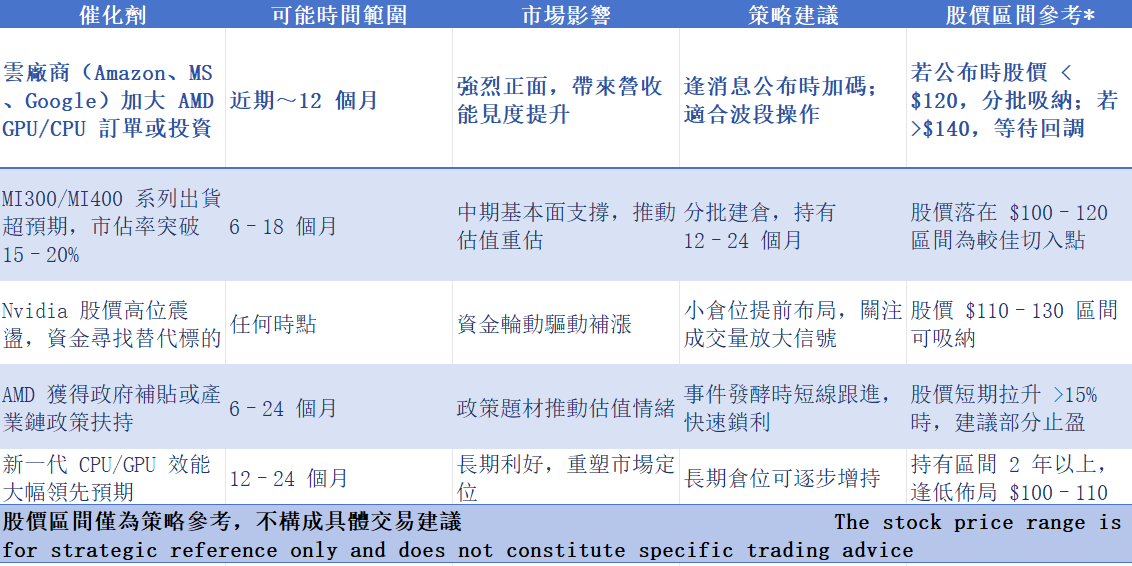
Will the next step of capital flow be towards AMD?

Why hasn't AMD shown its strength yet?
Positioning Issues
Nvidia: The undisputed leader in AI GPUs, with a clear narrative and high valuations.
Intel: At a low point, pulled up by strategic capital, with a "comeback" narrative.
AMD: Stuck in the middle, with technology not as monopolistic as Nvidia's and valuations not as low as Intel's, lacking an "extreme story" in the short term.
Fundamentals and Product Cycle
Server GPUs (MI300 series) have highlights, but shipment volumes and market share growth are slow, making it difficult to match Nvidia's H100/H200 in the short term.
PC/gaming GPUs and CPU businesses are dragged down by macroeconomic demand, with market expectations for revenue growth not as high as NVDA.
Capital Market Sentiment
Investors "either buy the king or pick the bottom." Nvidia represents the king, Intel represents the rebound from the bottom, while AMD appears neutral, lacking a clear leverage narrative.
Could Capital "Rotate" to AMD?
Capital always needs new stories and targets. Among the giants:
Nvidia is too expensive (a lot of capital is already on board);
Intel will enter a period of divergence after its short-term surge;
Other giants (Apple, Microsoft) are more platforms than pure semiconductor beneficiaries;
Thus, AMD, with its "cost-performance + growth potential," naturally could become the next target for capital bets.
Potential Triggers:
• Strategic investment/cooperation — If cloud providers (Amazon, Microsoft, Google) directly increase orders for AMD's GPUs/CPUs or even make capital investments, this would be a strong catalyst.
• Product iteration exceeds expectations — If the MI300/MI400 series rapidly gains share in the AI training or inference market, the market will revalue.
• Capital rotation — If Nvidia's stock enters a period of volatility/overvaluation pressure, some capital may "find alternatives" and turn to AMD.
Strategy Analysis
Short-term: Low volatility, lack of explosive news, not suitable for quick profits.
Mid-term (6–18 months): Can be seen as a "catch-up candidate." Recommend accumulating in batches; AMD may benefit when Nvidia faces valuation/supply chain constraints.
Long-term: If AMD can stabilize ≥20% market share in the AI GPU market, there is room for valuation to rise again; but this requires observing several product cycles.
Risk management: AMD's valuation (PE, PS) is no longer low; if performance/shipments fall short of expectations, it could face selling pressure. Suitable to use option structures (e.g., call spreads) to limit downside risk.
AMD Potential Catalyst List + Stock Price Strategy Table

The copyright of this article belongs to the original author/organization.
The views expressed herein are solely those of the author and do not reflect the stance of the platform. The content is intended for investment reference purposes only and shall not be considered as investment advice. Please contact us if you have any questions or suggestions regarding the content services provided by the platform.


